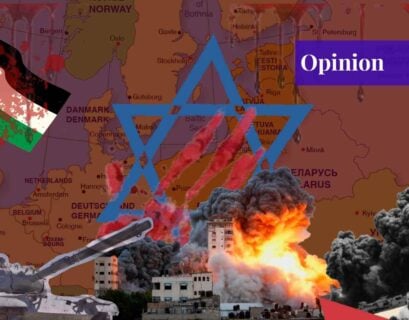Hamra Tariq is an undergraduate student currently pursuing her international relations degree at Kinnaird College for Women, Lahore. She has a keen interest in South Asian politics, the Indo-Pacific, and the shift in the global order.
A Theater for Wars
Afghanistan has remained a battleground for foreign invasions. The civil unrest, the war repercussions, and the tribal social structure altogether have progressively exposed the status of women in Afghanistan. The plight of Afghan women has in no way been near to normal; they are not just victims of conflict, they are victims of rhetoric too.
Both the Taliban and the US have used Afghan women as symbols in their respective wars. For the Taliban, the control of women represented a commitment to the hybridization of Pashtun customs with a fundamentalist interpretation of Islam, their key to establishing an ideal society. On the other hand, the Western powers emerged as the proclaimed ‘liberators’ who would free women from suppression by establishing a government that looked out for them and a rule of law that ensured their basic rights.
War on Terror as the Fight for Women’s Rights
The Bush administration in 2001 waged a war on Afghanistan in response to the infamous 9/11 attacks. The United States sold the justification of war by misrepresenting the status of women under the Taliban and stating that the war on terror was “also a fight for the rights and dignity of women.”
The ‘white-savior’ narrative can be traced back to the colonial discourses which legitimized occupation based on orientalist civilizing rationales. This way of thinking keeps promoting the notion that wars are inflicted to liberate Muslim women from oppressive men.
However, it is a fact that Afghan women faced subjugation at the hands of US-backed regimes and warlords during the time when foreign forces were present, and the international community deliberately chose to remain silent against that suppression. The colonial attitude not only pictures Afghan women as passive beings but also misrepresents the West as the ultimate moral authority to establish a ‘good’ example in Afghanistan.
Media—A Narrative Building Tool
After the fall of the Twin Towers, it was quite obvious that war was coming, but soon, the televisions in America and indeed in the entire world portrayed Afghan women in blue burqas and often highlighted the Taliban abuses against women. The public was being pushed into the narrative that the US waged the war to protect these women.
The most prominent visual metaphor used in the uncritical media coverage of the so-called fight to free women was the “unveiling” of Afghan women from their Taliban-mandated burqas. Foreign scholars, journalists, and officials in Afghanistan depicted Afghan women wearing burqas. They were not really interested in the realities and developments in Afghan society.
Afghan women were never actually heard. It is a pity that the mere dressing of Afghan women has been politicized by the West and Afghan governments time and again. Women’s bodies have been viewed as a display and an expression of sociopolitical progress and regression throughout recent history. It is evident by the persistent usage of images of Afghan women dressed in Western fashion in the 1970s and 1980s to reinforce the flawed idea that this was a high point from which Afghanistan had fallen.
In the past 30 years, it has become clear that the body of an Afghan woman is treated as a territory to establish a caliphate on, a rationale by the US and its allies to invade, and once more as a reason and justification for the Taliban to commit atrocities, recapture the country, and reimpose their rule.
The rural/urban divide in Afghanistan is clear from the transfer of women’s rights that were evidently limited to urban elites. However, the view that women’s rights, as a value brought by the West, reached the urban areas first underestimates the much more nuanced picture.
It is far more challenging to identify class and privilege in Afghanistan using the standards used in most other states due to the conflict, instability, and migration. The global image brokers dictate what the public sees from Afghanistan. The West’s persistent, self-serving narrative of acting as saviors of brown women from brown men jeopardizes lives. It complicates the lives of women purportedly being saved by sending international organizations into the country.
Dual-faced US’s Historical Shifts in Policy
Only if we disregard the history of US involvement in the region—a politics of intervention that first facilitated the growth of the Mujahideen, a marginalized extreme Islamicist movement, and then supported (and even celebrated) the rise of its more extreme offshoot, the Taliban—can the US be seen as liberating the women of Afghanistan from the Taliban.
By looking at the more complicated, complicit, and contradictory role that history exposes, the role of the US as a liberator is clearly refuted. Through cold war politics, the United States nurtured the conditions that allowed the Taliban to prosper; as a matter of strategic interest, it tolerated their human rights violations and gender apartheid.
If Afghan women were the primary focus of US foreign policy, the United States would have made different decisions from the cold war to the present. Thus, sympathy and support for Afghan women by the Bush administration can be analyzed as a war of words to mend public opinion during the “war on terror.” According to a scholar, Flanders, the rhetoric of women’s support used by the Bush administration added a “feminist glow” to the most brutal bombings of the 2001 campaigns.
Need for Deeper Insight into the Lives of Afghan Women
When combined with the religious and tribal traditions of gender segregation, which are seen by the Western gaze as fundamentally discriminatory and oppressive, there is a clear disregard and disrespect for Afghan women’s cultural and religious beliefs. Too frequently, the outside world makes generalizations about the incredibly complex political, historical, and social circumstances that have influenced Afghan women’s cultural environment.
It is important to recognize that Afghan women’s meaning of goals and liberation may differ slightly from the “freedoms” which Western feminism has envisioned. Nevertheless, the orientalist discourse helps the West strengthen the already developed sense of superiority; it also provides a tool for Western feminists to mobilize and analyze their patriarchal system of control.
The statement ‘Afghan women rights’ when searched on Google gives an extended list of sites of various human rights organizations and web articles trying to highlight and ameliorate the living standard of women in Afghanistan; this is hypocritical especially when the US and its allies failed to deliver its said promises in two decades.
If you want to submit your articles and/or research papers, please check the Submissions page.
The views and opinions expressed in this article/paper are the author’s own and do not necessarily reflect the editorial position of Paradigm Shift.



















